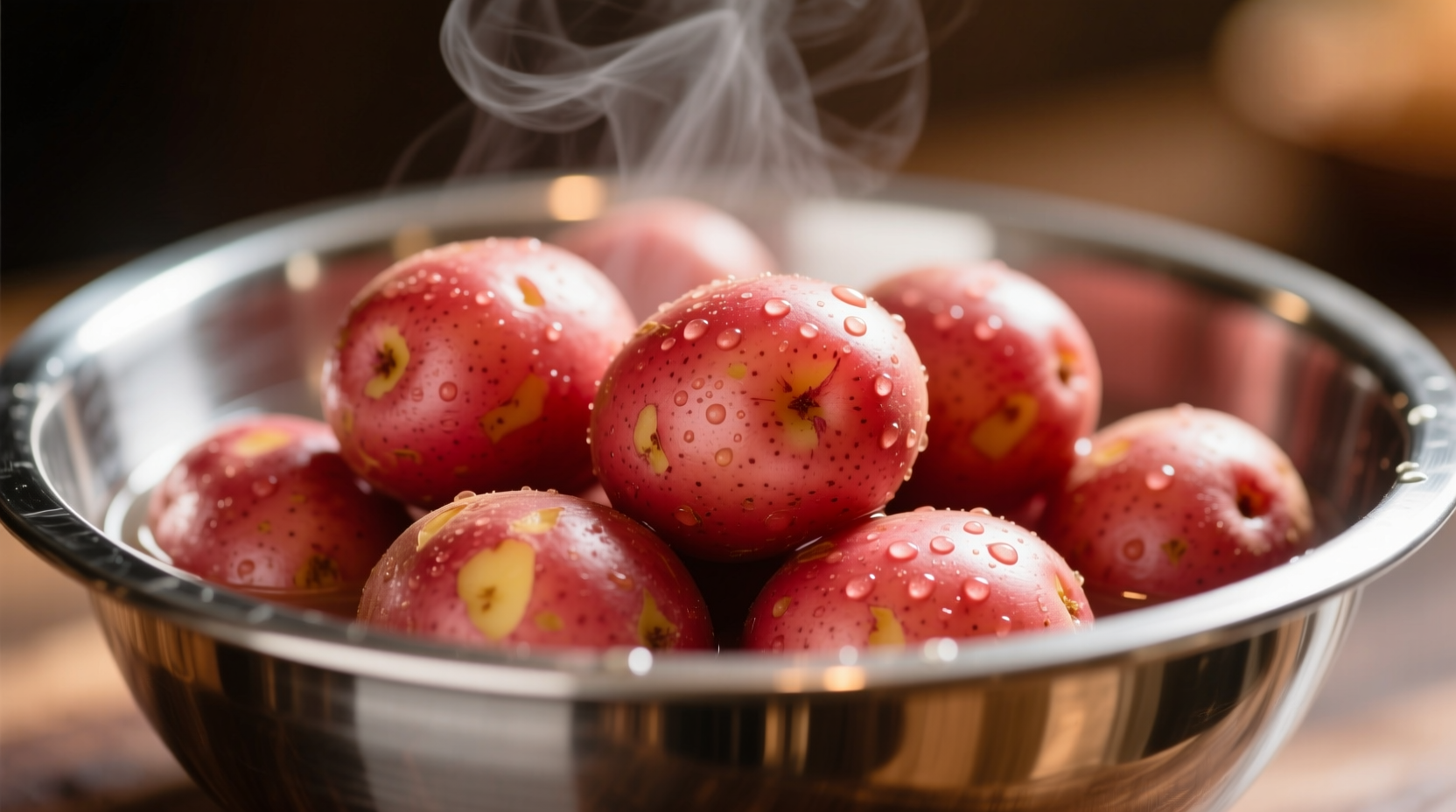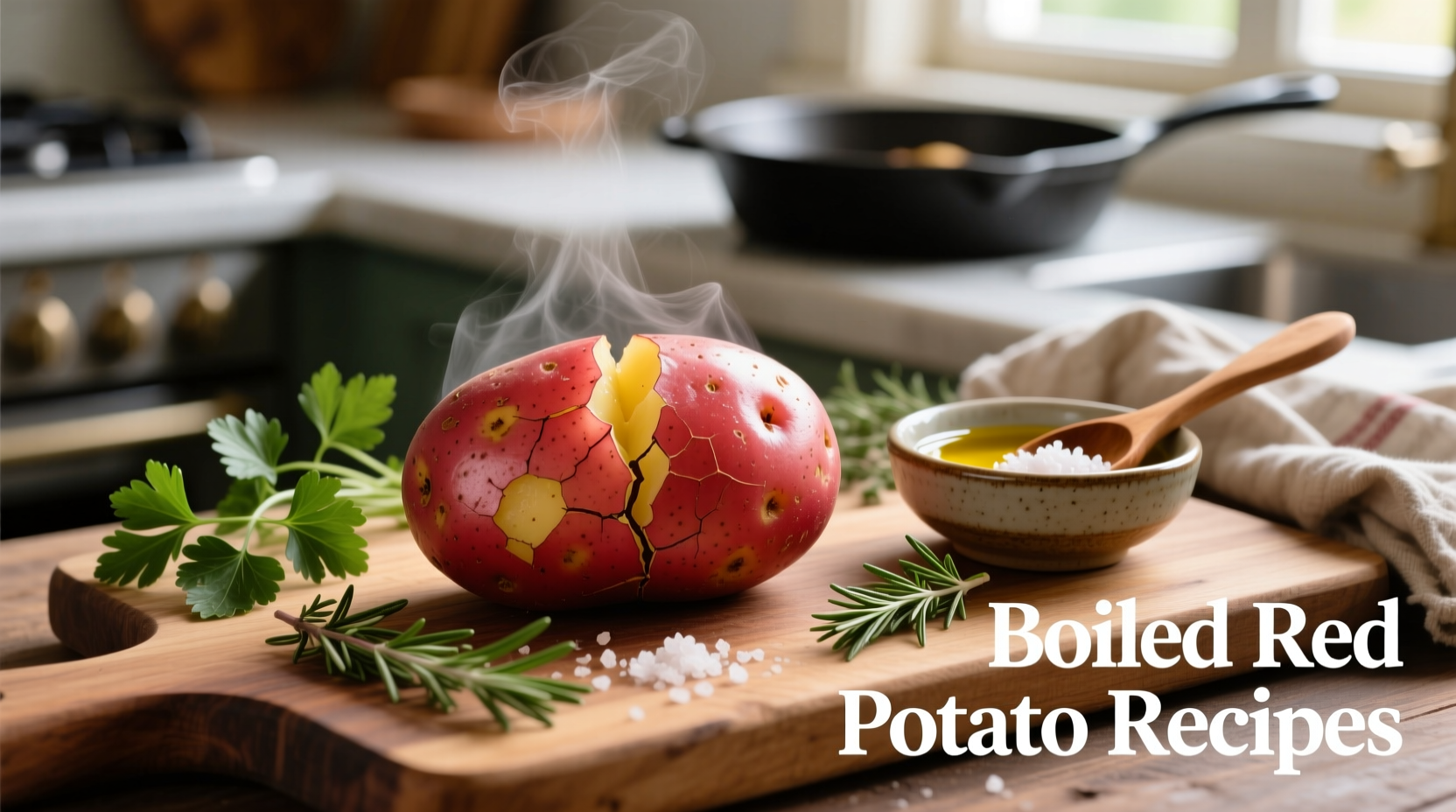Boiled red potatoes are a versatile kitchen staple that can transform from simple side dish to star ingredient with the right technique. Unlike other potato varieties, red potatoes maintain their shape beautifully when boiled while developing a creamy texture that absorbs flavors exceptionally well. This guide reveals professional methods for perfect boiled red potatoes every time, plus creative variations to elevate your meals.
Why Red Potatoes Excel for Boiling
Red potatoes contain less starch than russets, making them ideal for boiling. Their thin, nutrient-rich skin provides both texture and additional vitamins, eliminating the need for peeling in most recipes. According to the USDA's National Nutrient Database, red potatoes deliver 26% of your daily vitamin C and 8% of potassium in a single 5.3-ounce serving, with their nutritional value preserved better through boiling than frying.
| Potato Type | Starch Content | Best Cooking Method | Skin Characteristics |
|---|---|---|---|
| Red Potatoes | Low (15-18%) | Boiling, roasting | Thin, edible, nutrient-rich |
| Russet | High (20-22%) | Baking, mashing | Thick, requires peeling |
| Yukon Gold | Medium (18-20%) | Mashing, boiling | Thin, often left on |
The Perfect Boiled Red Potatoes: Step-by-Step
Follow this professional chef method for consistently excellent results:
- Selection: Choose uniform medium-sized red potatoes (about 2 inches in diameter) for even cooking. Avoid sprouted or green-tinged potatoes.
- Preparation: Gently scrub potatoes under cold water. Leave skins on for nutrients and texture, unless recipe specifies otherwise.
- Water Ratio: Use 4 cups water per pound of potatoes. Add 1 tablespoon salt per quart of water - this seasons from within.
- Cooking Process: Place potatoes in cold, salted water. Bring to gentle boil, then reduce heat to maintain simmer.
- Timing: Cook 15-20 minutes for small potatoes, 20-25 minutes for medium. Test with fork at 15 minutes - should slide in with slight resistance.
- Finishing: Drain immediately and return to pot over low heat for 1 minute to evaporate excess moisture.

Avoid These Common Boiling Mistakes
Professional chefs consistently emphasize these pitfalls that ruin boiled potatoes:
- Starting in boiling water: Causes uneven cooking - outside becomes mushy while center remains hard
- Over-salting the water: Makes potatoes waterlogged; use measured salt rather than "a handful"
- Using mismatched sizes: Results in some potatoes overcooking while others remain underdone
- Letting potatoes sit in water after cooking: Continues cooking process, leading to mushiness
- Not draining properly: Excess water dilutes flavors and creates soggy texture
Flavor Variations to Elevate Your Boiled Potatoes
Transform basic boiled potatoes into restaurant-quality dishes with these chef-approved variations:
Classic Herb Butter
Toss drained potatoes with 2 tablespoons melted butter, 1 tablespoon chopped fresh parsley, 1 teaspoon minced garlic, and freshly cracked black pepper. The residual heat melts the butter perfectly without making potatoes greasy.
Mediterranean Style
Mix with olive oil, lemon zest, chopped fresh dill, and a pinch of red pepper flakes. Add capers and chopped red onion after potatoes have cooled slightly to preserve freshness.
Garlic Parmesan
While potatoes are still warm, toss with 2 tablespoons olive oil, 3 minced garlic cloves (sautéed until golden), and 1/4 cup freshly grated Parmesan. The heat helps the cheese adhere without clumping.
When Red Potatoes Shine (And When to Choose Alternatives)
Understanding context boundaries helps you select the right potato for each culinary application:
- Ideal for: Potato salads, roasted potato sides, boiled accompaniments to fish or chicken, and dishes where maintaining shape is crucial
- Less suitable for: Mashed potatoes requiring ultra-smooth texture (choose Yukon Golds instead)
- Not recommended for: Deep frying (high moisture content causes splattering) or dishes requiring maximum starch absorption
Food safety note: According to FDA guidelines, cooked potatoes should not remain at room temperature for more than 2 hours to prevent bacterial growth. Store leftovers in airtight containers in the refrigerator for up to 4 days.
Serving Suggestions and Pairings
Boiled red potatoes complement a wide range of proteins and vegetables:
- With grilled meats: Pair herb butter potatoes with rosemary-marinated steak or garlic chicken
- In salads: Combine cooled potatoes with hard-boiled eggs, celery, and light vinaigrette for classic potato salad
- As breakfast: Sauté boiled potatoes with onions and bell peppers for home fries
- International variations: Toss with curry powder for Indian-inspired side, or with bacon and green onions for American comfort food
Storage and Reheating Tips
Proper storage maintains texture and flavor:
- Refrigerate cooled potatoes in airtight container for up to 4 days
- Freeze boiled potatoes for up to 3 months (best when sliced or quartered)
- Reheat gently in covered skillet with teaspoon of water to prevent drying
- Avoid microwaving whole potatoes as they become rubbery
- For salads, bring potatoes to room temperature before dressing for best flavor absorption











 浙公网安备
33010002000092号
浙公网安备
33010002000092号 浙B2-20120091-4
浙B2-20120091-4